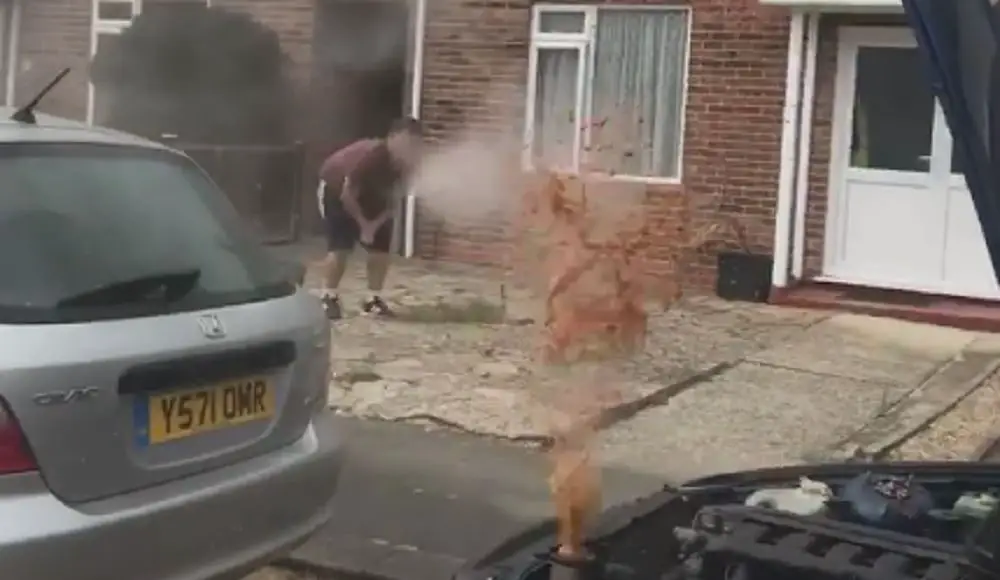If you need a visual reminder why you probably shouldn’t open your radiator cap when your engine overheats, learn a lesson from this BMW E36 owner.
A BMW E36 owner learned the hard way that when your car is overheating, the best thing to do is pop the hood and do absolutely nothing. A viral video from this E36 owner’s friend shows the exact moment he pops off his radiator cap too soon on his boiling over, overheating engine. What happens next is exactly the reason why you wait.
Check out the video and photos of the second-degree burns below.
Having your car overheat on you like this BMW did, it’s natural to become immediately concerned the way he reacted. With coolant boiling over past its boiling point, making sounds that are not typical of normal operating engines, people not in the know tend to act hastily without thinking.
If he actually took the time to read the warning on the radiator cap, it probably reads that he should, under no circumstances, take off his BMW’s radiator cap with the engine hot, especially if it’s overheating.
Radiator caps work by raising the pressure in the cooling system thus raising the boiling point of the coolant and water mixture. With pressure as high as 30 psi, there is lots of potential energy behind that radiator cap looking to equalize and escape as fast as possible with any crack introduced into the cooling system ala geyser.
It’s hard to believe that, among the three of them, no one knew this most basic of automotive principles. Harder still is that none of their parents passed down this vital information.
Things could’ve turned out far worse with hot boiling coolant sprayed on his face, eyes etc. Thankfully, luck was on his side and he only has a burned arm.
Generally, you’ll want to wait between 30-60 minutes before attempting to twist off a radiator cap on an overheating engine. Even then, you should only do so if you’ve got a rag or towel protecting your hand. Glasses or shades doesn’t hurt either just in case coolant still flies out.
Did you know that there was that much pressure behind a radiator cap? Let me know your answer in the comments below.




